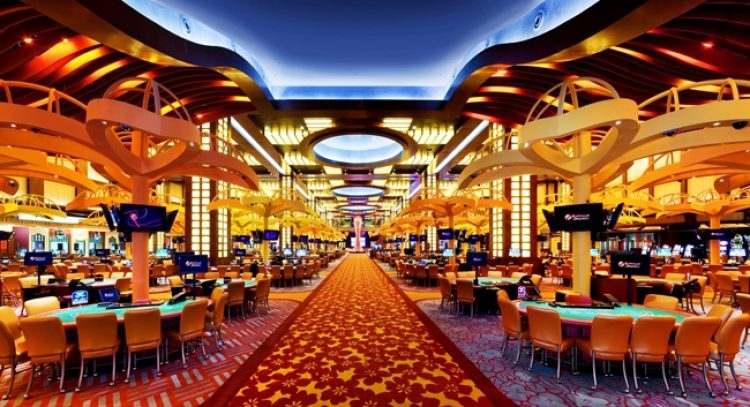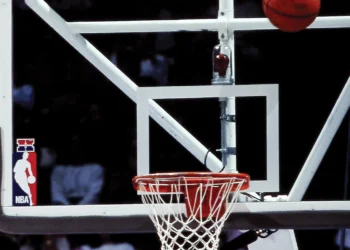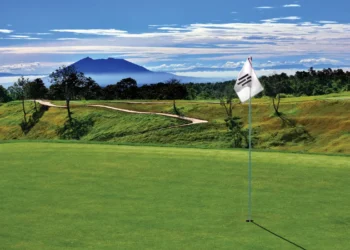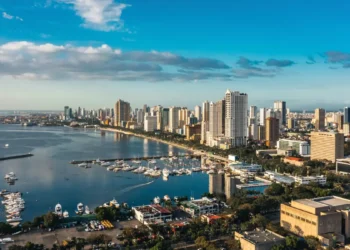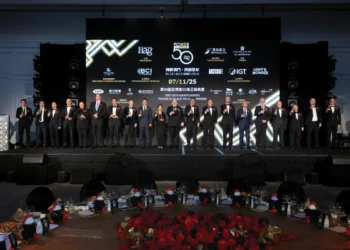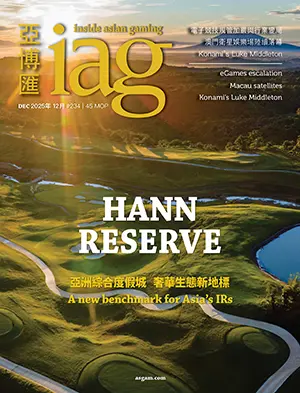Last year, Resorts World Sentosa lost its lead in the Singapore gaming market to Marina Bay Sands. While MBS appears to be holding on to the lead, some predict RWS could see a revenue spurt come the second half of the Year of the Dragon
On 14th February, Valentine’s Day, the casino at Genting Group’s Resorts World Sentosa (RWS)—the first of Singapore’s two casino-centred Integrated Resorts (IRs) to open—will celebrate its second birthday. The US$4.7 billion RWS was actually officially unveiled on 20th January, 2010, but it took a couple more weeks for the casino to get licensed and allow the public inside.
While mass-market gamblers are still very much in love with the casino at RWS, it appears the better heeled among them, as well as high rollers, have started to gravitate towards the city-state’s second IR, Las Vegas Sands Corp’s Marina Bay Sands (MBS).
Although Inside Asian Gaming’s sources suggest they observe significantly higher casino visitor numbers at RWS than at MBS (anecdotally, around 20% more), MBS’s share of total Singapore gaming revenue overtook that of RWS in the second quarter of last year. The inference is players at MBS are betting significantly more on average than their counterparts at RWS.
Up until the first quarter of 2011, the casino at RWS comfortably outgrossed that at MBS. Among the factors in RWS’s favour were its two-and-a-half month headstart and the considerable competitive insights and advantages Genting gained from operating a monopoly casino property in Malaysia since 1970, including an intimate familiarity with the wants and needs of players from Malaysia and Singapore and an extensive base of customers— many of whom belong to its loyalty card programme—in the region. Genting also benefited from some of LVS’s rookie mistakes in the Singapore market, the most notable of which was trying to replicate the games mix at its Macau properties. Unlike Macau, where baccarat is pre-eminent, in Malaysia and Singapore, roulette reigns supreme, and the MBS main floor had initially devoted too much precious floor space to the former game and too little to the latter. Since the casino areas at the IRs are limited to a maximum 5% of the properties’ total floor space, determining the optimal mix of games on the floor is particularly important.

In the second quarter of last year, gaming revenues at RWS plunged 27.4% quarter-on-quarter, while those at MBS continued their steady increase. MBS maintained the gaming revenue lead into the third quarter and by all accounts the fourth quarter as well, although the official comparison will need to wait until 22nd February, when Genting ingapore’s Q4 results are due for release.
Genting Singapore attributed the large dip in Q2 2011 revenue to lower win percentages in its premium players segment. Although gaming revenue at RWS bounced back in Q3 2011 as win percentages normalised, Genting Singapore’s earnings in the quarter were held back by a large increase in bad debt provisions related to its VIP gaming business.
In what Genting Singapore called a prudent move in the face of a slowing global economy and tightening credit conditions in China, the company raised its bad debt provisions to S$56.9 million for the third quarter of 2011, up from S$23.5 million in the same quarter of 2010. Genting Singapore’s higher bad debt provisions figure equates to 8.5% of its gaming revenue, according to Citigroup, and compares to provisions equivalent to an average of 3% of gaming revenue over the past six quarters. Macquarie Equities Research analysts Gary Pinge, Elaine Lai and Somesh Kumar Agarwal noted that the increase in provisions for RWS is “is in contrast to Marina Bay Sands, which has not shown higher provisioning, so we wonder if Genting Singapore’s decision was driven by its aggressive credit extension that was seen in the first half of the year.”
The Macquarie analysts added that Genting Singapore’s loss of VIP market share was “driven by a lack of competitive product relative to MBS,” and predicted the scheduled opening of the Bayfront MRT station near the swankier downtown MBS would also shift more mass-market players away from RWS. The analysts further pointed out that in addition to Genting Singapore’s loss of gaming market share in the third quarter, it also did not see much improvement in its non-gaming business.
Looking on the bright side
Not all analysts have a downbeat view on RWS, however. DBS Vickers Research predicts “RWS should start catching up soon on the back of: a) Ramp up in slot operations (+33% to 2470 machines by end-2011, comparable with MBS); b) Higher visitor arrivals with world’s first Transformers ride (launched on 3rd December) and potential spin-off from Genting Plantation’s Johor Premium Outlets; and c) Opening of Western Zone (Maritime Museum launched on 15th Oct; 200-room Equarius Hotel and 20 beach villas by early-2012 to attract higher-end VIPs; Marine Life Park & Equarius Water Park by mid-2012).”
DBS Vickers Research adds: “While MBS is closer to the CBD [central business district] and stands to benefit from completion of the Circle Line and International Cruise Terminal in 1H12, RWS can leverage on its theme parks and Genting Group’s 40-years’ experience in ASEAN (extensive customer database, good relationships with junkets).”
Meanwhile, leading regional financial group CIMB (which operates in the ASEAN countries), believes RWS has yet to reach its full potential, with the completion of further rooms and attractions likely to provide further impetus for growth.
According to CIMB, “Marketing programmes for RWS will likely be more restrained until its accommodation constraints are relieved and the West Zone is completed, which we expect in 2H 2012. The marketing team will then have more complete products to market.
“As such, we believe RWS has yet to reach its full potential, with sufficient accommodation, more complete product offerings and a boost from the company’s marketing efforts.
“It is arguably difficult to quantify the boost to gaming demand and earnings from these new non-gaming amenities. But even more comprehensive integrated resort offerings should help draw in more visitors, which in turn could translate into higher casino patronage and gaming revenue.
“We gather that Genting Singapore has been relatively unaffected by the extension of the scope of Casino Control (Advertising) regulations on promotions. Even before the extension, all promotions had to be vetted by the authorities. With the recent measures, there are in fact more certainties on the ‘dos and don’ts’ of promotions.
“Genting Singapore will be releasing its 4Q11 results on 22 Feb. Non-gaming revenue should be boosted by the launch of new attractions and year-end holiday season.
“On the flip side, gaming revenue, particularly in the VIP segment, might still be impeded by a lack of accommodation given delays in the opening of Equarius Hotel and the beach villas and Genting Singapore’s still-cautious lending policy. As such, we flag the risk of a results shortfall. Our current FY11 EBITDA projection of S$1,750m implies a 4Q EBITDA of S$498m.”
Macro view
While the two IRs will continue their tussle for market share dominance, the consensus view is the pie as a whole will continue to get bigger. Singapore’s gross gaming revenue is forecast to grow from around US$6 billion in 2011 to a range between US$6.6 billion (according to CLSA Asia-Pacific Markets) and US$7 billion (DBS Vickers Research) in 2012.
DBS Vickers Research notes its forecast does not include the potential impact of junkets, explaining “While junkets could lead to potential cannibalization of the direct VIP segment and lower margins due to commissions, these should be mitigated by stronger volume growth and lower receivable provision/ impairment.”
Both IRs will also continue contributing to Singapore’s tourism growth. In 2010, the year the IRs opened, Singapore’s visitor arrivals rose 20% year-on-year to a record 11.6 million, reversing declines of 4% and 2%, respectively, in 2009 and 2008. Visitor expenditures rose 49% in 2010. “Perhaps 25% of tourism growth is from the IRs,” HSBC senior gaming and consumer analyst Sean Monaghan estimates.
Tourism data for 2011 show additional rises of 13% for arrivals to 13.2 million and 17% for expenditures to S$22.2 billion. Revenue from the sightseeing and entertainment sectors, which includes gambling, soared 37% to S$5.5 billion. The growing visitor numbers also underlie the double-digit increase in hotel rates and average revenues despite some 4,000 rooms being added to supply.
Notably, Singapore’s tourism figures do not include arrivals via its land border with Malaysia, which likely grew by much more, with Malaysians constituting the largest group of non-local players at the IR casinos.
Mainland Chinese players are also prominent in the mix. Following the opening of the IRs, the number of mainland Chinese visitors descending upon Singapore has spiked. In 2010, the number of mainland Chinese visitors to Singapore jumped 25.0% to 1.17 million, reversing a 13.2% decline in 2009. In 2011, the number of mainland Chinese visitors soared 34.7% further to 1.58 million. Mainland Chinese now constitute the second biggest group of visitors (exland border) to Singapore after Indonesians, who numbered 2.59 million in 2011 (a 12.4% year-on-year increase).






